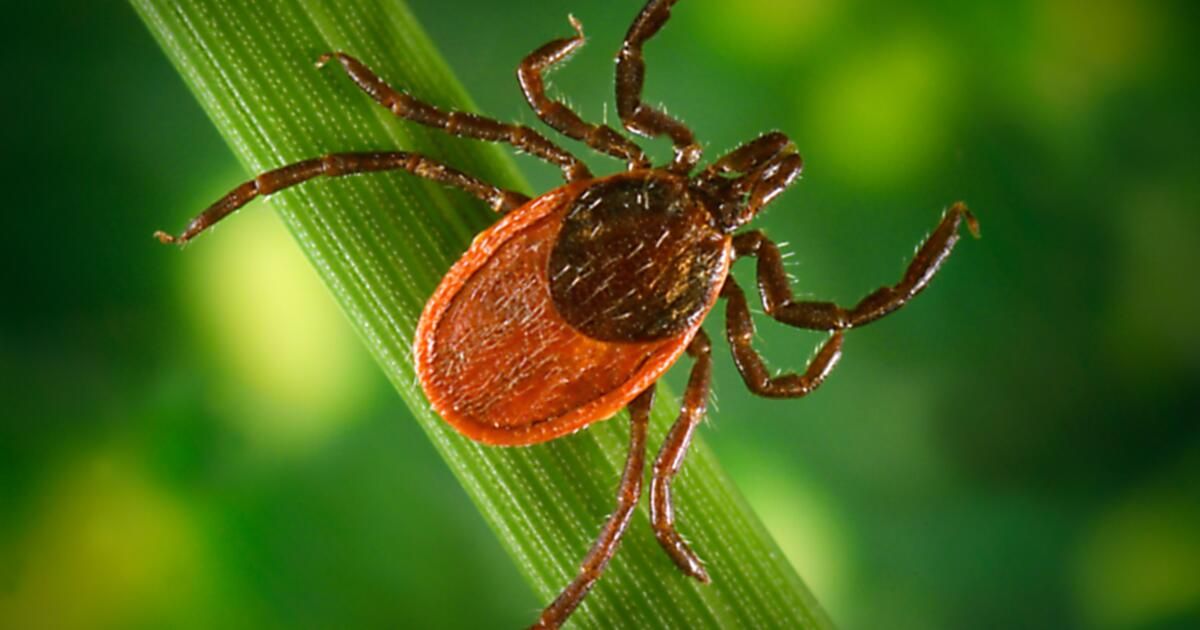It is possible that dog owners need to be alert for a disease that many have never heard: Anaplasmosis, spread by the same tick that transmits Lyme's disease.
Anaplasmosis can cause febrile or lethargic dogs to raise their nose in food and lose weight, but many do not show signs of disease at all. However, in rare circumstances, dogs can bleed from the nose, have neck pain and suffer seizures.
The percentage of dogs in California that tested positive for exposure to the bacteria that causes anaplasmosis shot in the last five years, almost tripling between 2021 and 2024, according to data from the Council of parasitaries without profit.
Humans can also get the disease. Dogs obtain more tick bites and are tested more frequently by vector -transmitted diseases than people, so they can be sentry for their owners.
“It is a canary in the coal mine,” said Brad Ryan, a veterinarian of professional services in Ante Diagnostics, a company that offers tests and other services to veterinarians. “When the prevalence begins to rise to the animal population, we know that the risk of public health, by default, has also increased.”
Anaplasmosis and Lyme disease spread through Western black ticks.
More than half of California counties are labeled as a high risk of infection, including Santa Bárbara and San Diego. The ascent began after several years of decline.
In Los Angeles County, which is considered a moderate risk, approximately 1.2% of dogs are now positive, more than 0.5% five years ago.
The Companion Animal Parasites Council believes that its numbers are a lower content, estimating that they are only capturing 30% of the parasite activity in a given geographical region.
'It's a lot here'
Climate change is between a cocktail of factors that feed an increase in diseases transmitted by ticks throughout the country, since warming temperatures allow parasites to march to new areas and extend their season. In California temperate, experts say the risk is throughout the year.
Western black ticks are migrating to southern California from the northern part of the state. Meanwhile, brown dog ticks, vectors for ehrlichiosis bacterial infection, are walking north from Mexico to southern California.
The good news is that both puppies and people affected by anaplasmosis usually recover rapidly with antibiotics. But some experts say that the consciousness of the threat is being stopped in southern California, an area that is not historically known for being a tick shelter.
“Anaplasmosis is not just a problem of the east coast; it is very here in California,” said Dr. Sunjya Schweig, founder of the California Functional Medicine Center.
“Unfortunately, doctors do not always recognize it, so sometimes it is very difficult for people to obtain adequate attention.”
In context
In relation to other parts of the country, the prevalence of anaplasmosis among dogs in southern California remains low, with the parasites council forecastG approximately 1% to 2% this year. However, there are hot points along the north coast of the state, some with rates of 8% or more.
Western black ticks prosper in wet and great environments. Experts do not agree on the perspectives of their future diffusion.
It is unlikely that they are gangbusters in Arid Socal, in the opinion of Janet Foley, professor of Medicine and Epidemiology at the School of Veterinary Medicine of UC Davis.
They appear in hospital areas in places like Malibu, Ventura and San Diego, he said.
But Ryan believes that ticks could proliferate in the region.
“Always joke, unless its veterinary clinic is installed in the middle of the Death Valley Death National Park, where it hardly rains throughout the year, there is nothing that stops the establishment of these Western black ticks, or the ticks of the deer, throughout the south of California,” Ryan said.
TO report The California Department of Public Health shows an increase in cases of confirmed and probable anaplasmosis in people in recent years. Although the raw numbers are low, the figure doubled between 2020 and 2021 and has remained elevated until 2023, the year of the most recent report available.
In 2023, almost all the 21 cases, which included eight patients from the Los Angeles County, were linked to travel to northern California or other parts of the United States.
Foley said areas such as New England, New York, Minnesota and Michigan are seeing a dramatic increase in Anaplasma. “So let's see more cases here, in dogs and people, because there will be more travel imported from travel.”
Local factors may also be linked to the trend. People are accumulating more deeply in the animal habitat, cutting the ground in a way that the ecosystem can alter, said Schweig. It is possible that predators such as Bobcats can no longer look for rodents and birds, tick hosts, in pocket parks or suburban landscapes. Then the little animals and their parasites thrive.
Controversy: 'Like a religious battle'
Receiving disease test extended by ticks may be easier if you walk on all fours than two.
“We have more options, sincerely, on the veterinarian,” said Ryan, from Antech. It recommends that the veterinarians show dogs for common diseases transmitted by vectors in annual welfare exams, and that dog owners put their pets in medicines for flea prevention, ticks and heartwalks of heart throughout the year.
In the human field, Schweig described a great struggle on appropriate tests and treatment, “as a religious battle”, between groups such as the Centers for Disease Control and the Society of Infectious Diseases of America “versus people like me” and the Bay Area Lyme Foundation, where he works as a member of the Scientific Advisory Board.
“We are saying, hey, there is a big problem. It is much more common than we know. The tests are bad. There are many sick people who are not being diagnosed.”
He called the “most open” veterinary community about Lyme and other diseases transmitted by ticks. “Unfortunately, when you go to the human doctor, they never routinely offer these tests, unless you take this tick and have a fever.”
Stay safe
The ticks are active throughout the year in California, but the risk usually reaches its maximum point in spring when the scathing arthropods are born, and in autumn, after the first rains.
Many humans are infected when nymph ticks are numbered, a period in their life cycle in which they are approximately the size of a poppy seed and barely visible to the naked eye.
Hiking, camp, horseback riding and really anything that involves getting into the grass will increase its possibilities of being exposed to insects.
To reduce the probability of a tick bite:
- Use long pants and sleeves
- Spray Relative tick on your skin and clothes
- After a puzzle in preferred ticks, such as wooded areas, remove clothes when you get home and put it in a dryer for 15 minutes over high heat.
- Consult yourself, and your human and canine partners, to obtain errors. It is good to scan the lines, behind the ears, the belly, the armpits and the areas of the groin.












